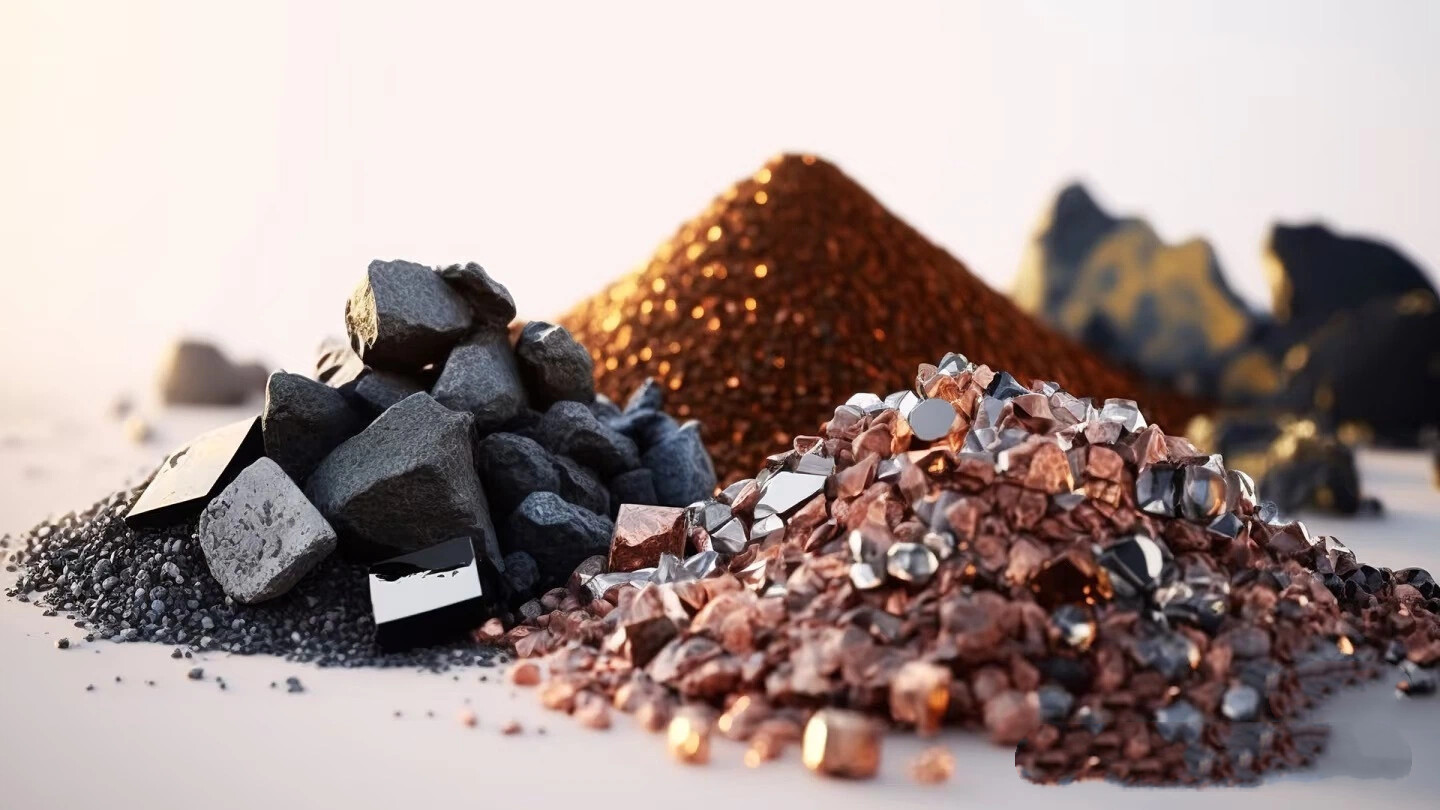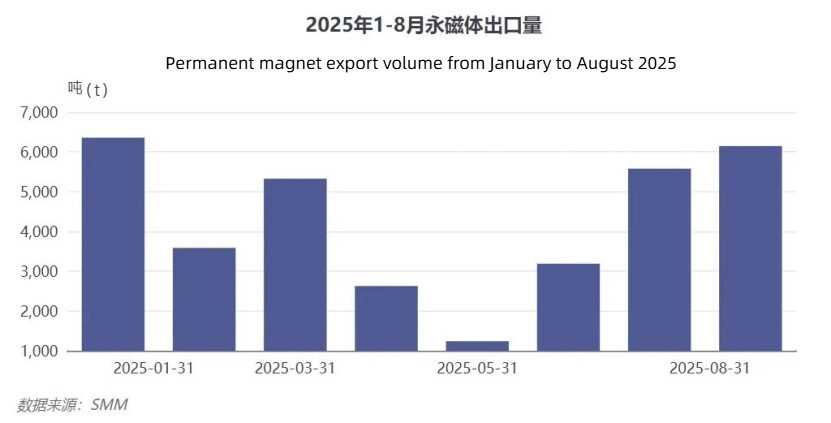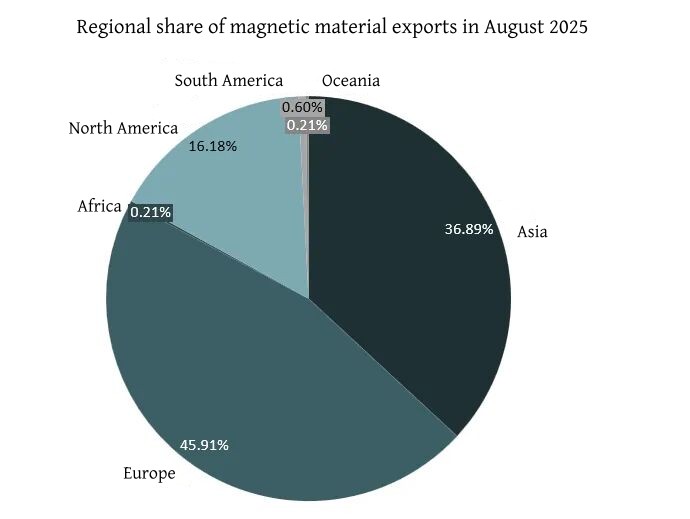
One stop solution for magnetic products

Rare earth permanent magnets, the "vitamin" of modern industry, play an indispensable role in fields such as new energy vehicles, wind power generation, and industrial robotics. In August 2025, China's rare earth permanent magnet exports showed a strong rebound, reaching 6,145,623 tons, a 10.19% month-on-month increase and a 15% year-on-year increase, reaching a new high since January of this year. Europe contributed over 90% of this 600-ton increase.

01. Export Data Interpretation: Total Rebound and Regional Divergence
As of August 2025, China's cumulative exports of rare earth permanent magnets reached 34,041.06 tons. Although this figure represents a 10% decrease from the same period last year, August's strong performance indicates a recovery in market demand.
From a regional perspective, the export landscape showed significant differentiation. Asia exported 2,267.21 tons, essentially the same as in July. Exports from Africa, North America, South America, and Oceania also remained stable at 13,195 tons, 994,085 tons, 36,808 tons, and 12,949 tons, respectively.
The real growth engine came from Europe—exports to Europe jumped to 2,821,403 tons in August, marking three consecutive months of growth.
Among major exporting countries, Germany performed particularly well, with imports reaching 1,341.08 tons, a 20.19% month-over-month increase. Meanwhile, imports from the United States were 589.85 tons, a 1.6% month-over-month decrease.

02. Overall Industry Outlook: Short-term Pressure and Long-term Growth
From a full-year perspective, the industry generally expects total magnetic material exports in 2025 to be approximately 49,000 tons, a decrease of approximately 15% from 58,120 tons in 2024.
As of August, cumulative exports have reached 34,000 tons, meaning a further 15,000 tons will need to be exported over the next four months, averaging approximately 3,500 tons per month, to meet expectations.
In the short term, a large number of urgent European orders have largely been fulfilled. Due to the Christmas holiday, growth potential in the fourth quarter is limited, and overall export volumes will be modest.
In the medium to long term, continued expansion in demand in emerging sectors will inject new momentum into the industry. Global demand for high-performance NdFeB is expected to continue to grow, particularly in Europe's new energy vehicle and wind power sectors.
03. The surge in exports is driven by both geopolitical factors and industrial demand.
The Sino-US rivalry has prompted Europe to accelerate its stocking process. Overseas customers are eager to stock up, extending the lead time.
The rigid demand generated by Europe's industrial peak season is another key factor. Rare earth magnets are a key component of high-performance motors and generators, and are widely used in the renewable energy and automotive industries.
One in three new energy vehicles worldwide relies on Chinese rare earth magnets, and each electric vehicle's drive motor requires at least 1.5-8 kg of neodymium iron boron magnets.
Demand in the wind power sector is also strong, with the penetration rate of direct-drive permanent magnet wind turbines increasing, and the demand for magnets per unit is enormous.
Export control policies have highlighted the advantages of large manufacturers. Under the current regulations, large magnetic material companies, directly supplying leading European companies, enjoy more streamlined export approvals and more comprehensive magnetic material traceability systems.
Search
Categories List
Please give us a message

Beijing Saint Langma Magnetic Technology Co.,Ltd